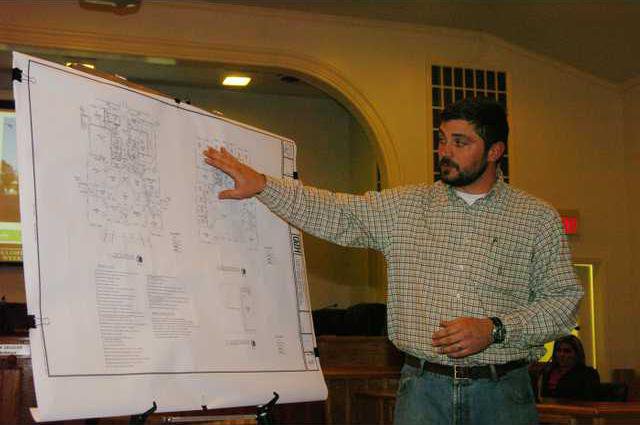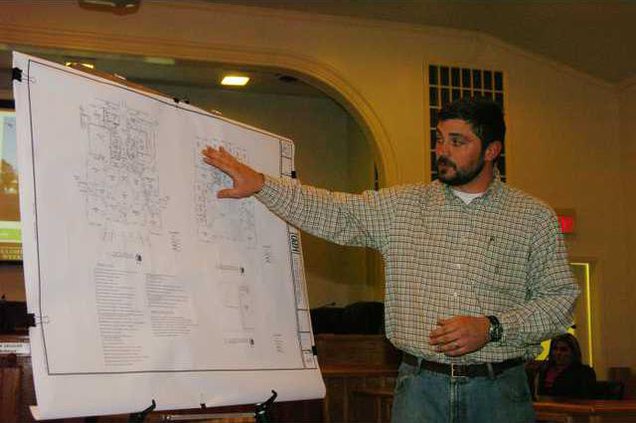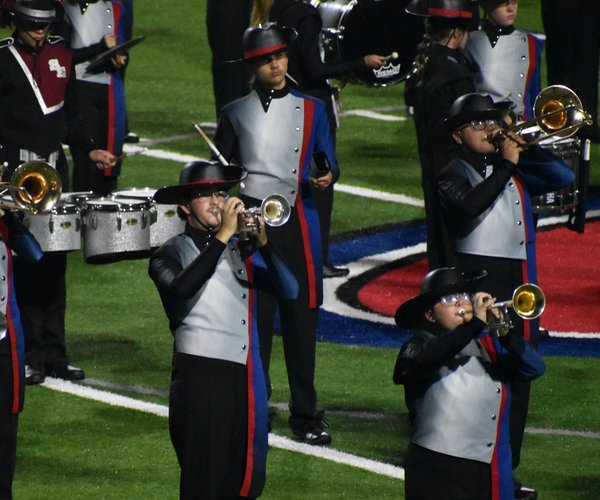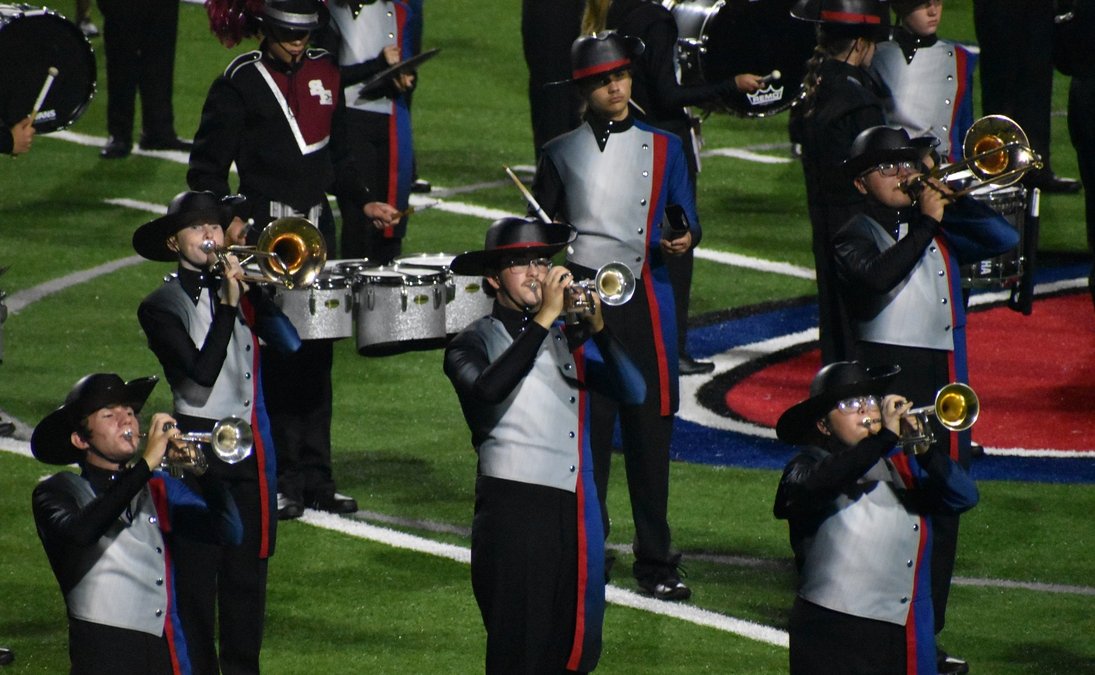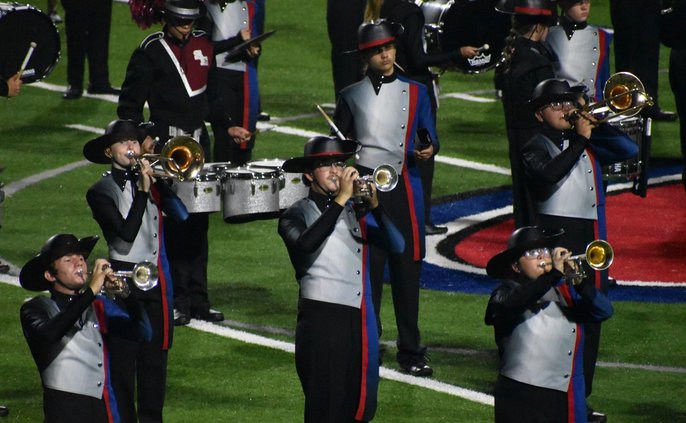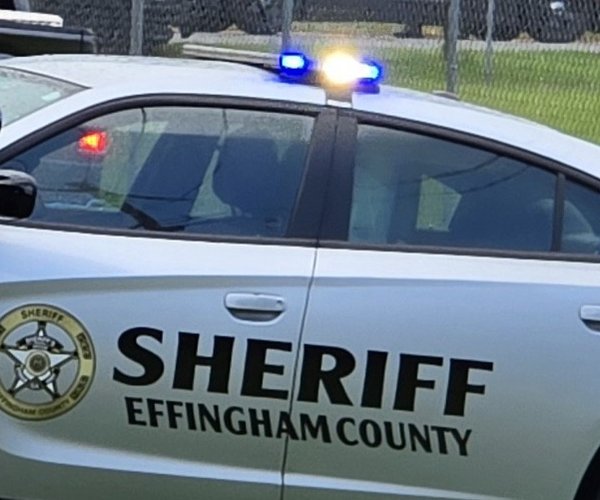The rehabilitation project for the historic Effingham Courthouse is on track, contractors said Tuesday.
The courthouse, which opened in 1909 and has undergone two major renovations, is on the National Register of Historic Places.
“It’s a beautiful building,” said county project manager Adam Kobek. “It’s definitely a gem.”
Two additions to the courthouse have been done to the courthouse, in 1933 and in 1979. Most of the problems with the building have stemmed from the additions.
“The structural integrity of this building has stood the test of time,” Kobek said of the 1909 structure.
And as the first team of the design-build group, tasked to determine what is historic and should stay and what should go, has gone through the courthouse, they’ve discovered and uncovered many changes.
“We did a lot of investigation, and there’s a lot of questions we haven’t been able to answer,” said Josh Simpson, project manager for the first phase. “
While the 1979 plans are available, the 1933 plans are not in hand.
Work on the century-old courthouse is expected to wrap up in mid October, right on schedule. The county hoped to get started on work on the courthouse in 2002, around the same time work was set to begin on the new judicial complex just a few dozen feet away.
“We had grand plans to get started immediately,” Kobek said. “But we had a small albatross around our neck of the judicial complex.”
The money approved in a prior special local option sales tax was set aside to the next round of SPLOST to be used on the old courthouse.
Commissioners selected a design-build team of J.T. Turner Construction, Greenline Architecture and Hussey, Gay, Bell and DeYoung.
Every wall in the 1909 structure is intact except for one, Kobek said. The project is seen as a rehabilitation and the courthouse isn’t projected to be returned to its original use. The courtroom will be restored but is being reserved for ceremonial use, though it may be used as an overflow courtroom.
“It’s the most historically defining feature in our building,” Kobek said. “Through some diligent work, we’ve been able to uncover some interesting facts. The original layout of this courtroom was dramatically different from when this project began.”
A jury box sat two feet from a back wall, two pot-bellied stoves flanked the judge’s bench and there was no witness stand. Any witness in court would have either stood or sat in a chair placed on the floor.
“It’s been a pleasure to go to the job site every day and play detective,” Simpson said.
The original hardwood floors, that have been covered up by carpet, will be restored and brought back to life, Kobek said. All the paint in the courtroom, corridors and rotunda will be stripped and stained. Any of the original wood that cannot be reclaimed will be replaced by reclaimed heart of pine and will be stained to match.
Under the original plans, the dome of the 1909 structure was supposed to be copper. But the historic and selective destruction team found out that wasn’t so. It turned out to be pressed metal.
The original seven fireplaces have been located, but as shallow, coal-burning fixtures, they won’t be used again.
The old courthouse also will be the county’s first LEED-certified and will be the state’s first LEED-certified historic courthouse. All the materials and lighting fixtures were picked for their compatibility and for being very energy efficient, said Mark Fitzpatrick, J.T. Turner’s director of preservation.
The building is being rewired. New plumbing and new heating, ventilation and air conditioning will be installed.
“If you can imagine it being replaced and it not having historical significance, it probably will be replaced,” Kobek said.
In accordance in LEED standards, any wood used as replacement will be grown and milled from within 500 miles. Stripping the paint first started with citric-based and soy-based. But they weren’t that effective, Simpson said.
“We’ve got a ton of paint to strip off,” he said.
But the materials to be used inside the building also will be different.
“When you walk into that building, it won’t have that new carpet smell and it won’t have that new paint smell,” Simpson said.
And the judicial complex will have a role in the work on the old courthouse. Marble left over from that project will be used in the bathrooms of the historic building.
“We were scratching our heads — what building will be grand enough for the marble we have,” Kobek said.
The building should be ready for move-in by Oct. 15. County offices that are scheduled to take up space in the renovated historic courthouse include the tax commissioner, the tax assessors office, GIS and the district attorney.
The original courthouse was built upon the 1907 recommendation of a grand jury. It was built in 1909 for $25,000. Property was donated by the Effingham Hussars. The cornerstone was laid on Feb. 22, 1909, on George Washington’s birthday, and the building was completed later that year.
The cost for rehabilitation for the building is approximately $3 million.
A time capsule placed in the 1909 structure’s cornerstone will be removed and opened on Feb. 22, 101 years after it was sealed into the building.
“It’s going to be an exciting job,” said Tom Draffin, director of operations for J.T. Turner Construction. “We and the citizens of Effingham County will be proud of this for a long, long time. It’s a magnificent building.”
